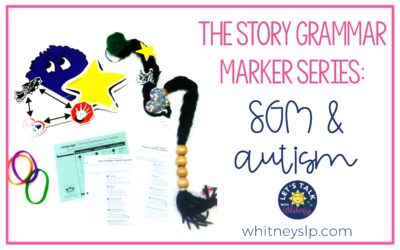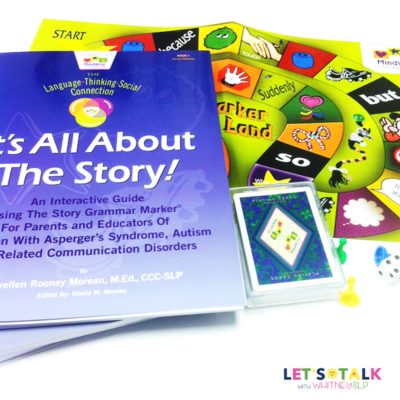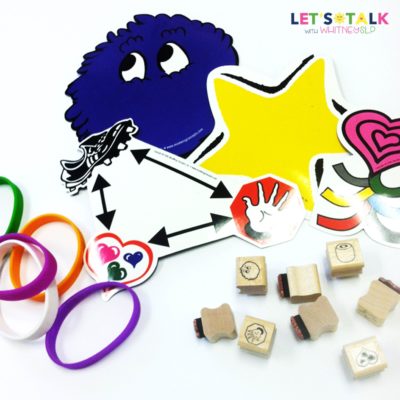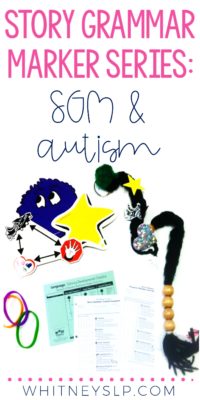As much as I already loved SGM, I loved it even more after I took the Autism Training. Children with Autism make up a large portion of my caseload. I am always looking for ways to expand their language use, vocabulary, and social skills. Lucky for me, Story Grammar Marker does all that and then some. Today’s post from the Story Grammar Marker Series is on Story Grammar Marker and Autism.

Have you ever noticed how all kids love to touch things? This is why I never wear white! When kids touch, it stimulates senses-and it helps them learn. With SGM, they can play with Braidy, change his or her face around to show different feelings, and incorporate movement and motions into learning. This makes what they are doing more fun, engaging, and memorable.
When I first introduced my students with Autism to Braidy, they loved him. They wanted to hug him, kiss him, take him apart, put him together, and make him mad! For some reason, they like to make him look mad more than happy, so our Braidy is usually mad! What a great way to teach feelings, though!
Getting Started
When I first introduce Braidy to my students with Autism, we talk about what a character is and how all characters have eyes, a face, and a head. I teach them about how characters have thoughts and feelings, and how each of us could be characters, too. In addition, we talk about how we feel and what makes us feel that way. Each student takes a turn telling the group a feeling and making Braidy’s face match their face. They absolutely love it!
We then move to talking about the setting and then the kickoff. We read books, ask questions, have Braidy act out the story, use visuals to retell the story, use Braidy to retell the story, and velcro visuals on Braidy to help them with story retell. Not every student starts on the same level, and not every student ends on the same level. But every student makes progress. Each and every one.













